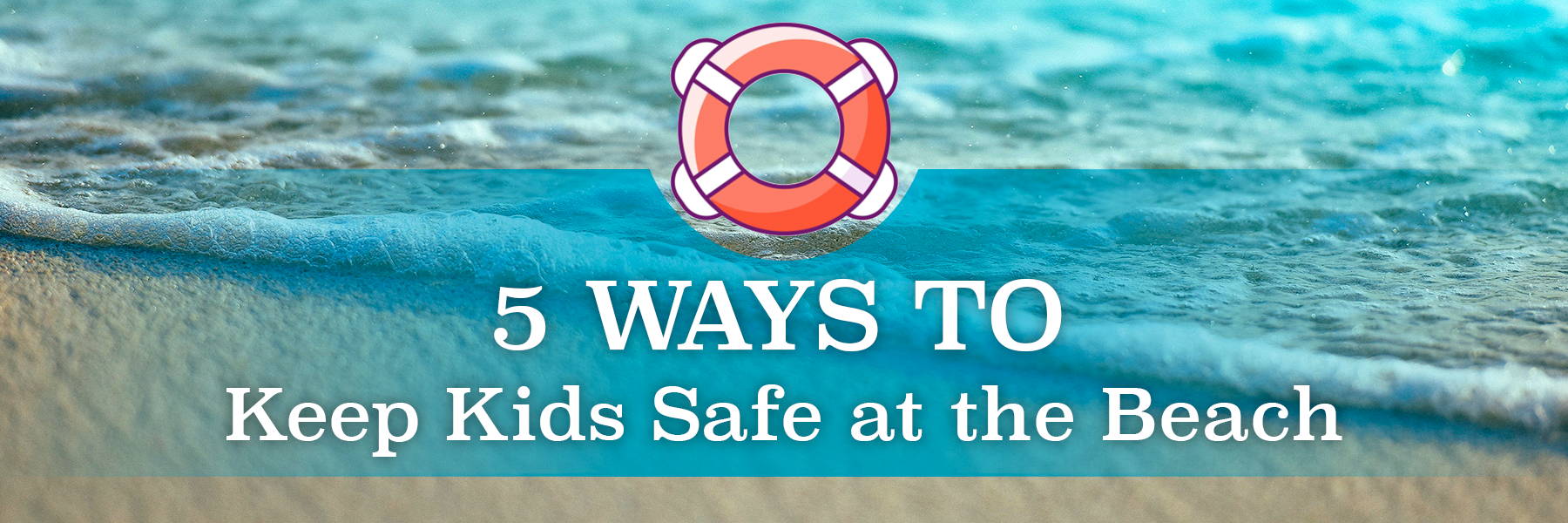5 Ways to Keep Kids Safe at the Beach

While making sandcastles and playing in the surf offers a day of fun in the sun, don’t forget to brief any young people in your party about beach safety. While they may roll their eyes, establishing a set of beach-related rules is always a good idea. Here are five important tips you can offer your precious kiddos to ensure their safety and confidence in any beach-related situation.
Always Swim with a Lifeguard
Encourage young people to only swim whenever a lifeguard is present. While lifeguards are trained to react immediately in any emergent beach situation, they are also essential for preventing tragedy and dangerous circumstances. Lifeguards are always on the lookout for rough surf, rip currents, wildlife, stormy weather, and various other situations that could compromise the safety of beachgoers. This tip is especially important for teens, who have more independence than younger children – discourage them from swimming at night or in areas that are unmonitored by a lifeguard.
Understand Beach Flags & Signs
Most beaches have a flag system to indicate the condition of the water. For example, New Jersey uses the following flag system:
Double Red: Beach is Closed
Single Red: High Hazardous Condition (Strong Surf/Currents)
Yellow: Medium Hazard (Moderate Surf/Currents)
Green: Low Hazard (Caution Still Necessary)
Further, beach signs and flags near the water or jetties remind swimmers where it is safe to swim and where swimmers are not allowed. Remind young people to always obey any posted signs, check the flags, and ask a lifeguard or beach official if they have questions about how to stay safe.
Our Favorites
Look Out for Rip Currents
Rip currents (otherwise known as rips or rip tides) occur when a current under the surface of the water pulls water strongly back out to sea. These currents are common with breaking waves, and they can be deceptively dangerous to swimmers. Educate any children in your party about the presence of rip currents, and teach them the following tips for staying safe if they find themselves being pulled by one:
If you are able to touch your feet down, do your best to stand and walk towards shore.
Don’t fight the current – this will make you feel tired. Instead, swim parallel to the shore to escape the rip.
If you are becoming exhausted or can’t get out of the current, wave your arms and shout for the lifeguard’s help.
This can be a scary experience for anyone but especially so for younger swimmers. Make sure kids in your group know how to combat a rip current before they jump into the ocean for a swim.
Protect Yourself From the Sun
While many of us love to lay out, get tan, and simply enjoy the sun’s warmth on our skin, it is important to stay protected, especially when the sun’s UV rays are at their strongest. Sunburn and sun poisoning are two of the easiest ways to ruin a beach vacation, so remind your kiddos to take extra care when playing at the beach. Help them stay safe with the following ideas:
Encourage (and even help them) to apply sunscreen of SPF 30+ or higher every two hours – this is especially important for kids who love to be in the water, where sunscreen is easily washed off.
Remind them to wear their sun hat and UV-protective sunglasses during sandy play.
Gift them a rash guard or UV protective suit, so their shoulders, backs, bellies, and legs remain covered from the sun.
Provide an umbrella or canopy to shade them from the sun, especially during the hours of 11AM and 3PM when the sun’s UV rays are strongest.
Have a Plan for Getting Lost
Many beaches are crowded during peak summer months, and it’s easy to lose track of other members of your beach party during busy times. To help avoid the panic that sets in when a child is separated from their parents or guardians, come up with a plan in advance. The tips below help adults to be proactive and to develop an “in case of separation” plan they can communicate to children:
When your party arrives at the beach, decide on a meeting place in case someone gets separated.
Dress children in bright, unique clothes and swimwear that makes them easily identifiable.
Carry photos of the children on your phone or in your wallet to help with identification if they go missing.
If your child is very small or has special needs, consider attaching a wrist band that contains your contact information (or details about their condition).
Remind your child that they can always go to a lifeguard or another mom for help if they are lost.
Relax with Confindence
Having a good time at the beach is everybody’s main objective, but establishing a working set of safety rules in advance will help both grown-ups and children relax with confidence. Are you looking for a beachy gift for the kiddos in your life? Check out our fun, nautically-inspired collection of beach jewelry today!
